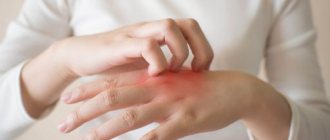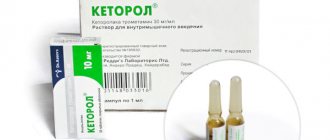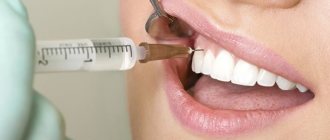Clotrimazole is a broad-spectrum antimycotic or antifungal agent. The antimycotic properties of clotrimazole were discovered in the late 1960s. The drug belongs to the category of imidazole azole antifungals. It is available in a variety of dosage forms, including creams, ointments, tablets, and slow-dissolving capsules.
Clotrimazole may be used to treat anemia
In addition to its antifungal activity, clotrimazole has become a drug of interest for the treatment of a number of other diseases, such as sickle cell disease, malaria and some types of cancer. This drug's minimal side effects and uncomplicated metabolic profile have led to its widespread use for the treatment of fungal outbreaks, such as vaginal infections caused by yeast spores (candida vulvitis or thrush), as well as athlete's foot.
Use of the drug
Clotrimazole cream is prescribed for the topical treatment of the following skin infections:
- Tinea pedis, tinea cruris and tinea corporis caused by Trichophyton rubrum, Trichophyton mentagrophytes, Floccosum Epidermophyton;
- Candidiasis caused by Candida albicans;
- Herpes zoster caused by Malassezia furfur;
- Diaper rash infected with Candida Albicans;
In some drugs, clotrimazole can be combined with betamethasone dipropionate and corticosteroids.
The oral formulation is indicated as a prophylactic drug to reduce the incidence of oral and pharyngeal candidiasis in immunocompromised patients receiving chemotherapy, radiation therapy, or steroid therapy used to treat leukemia, cancer, or kidney transplantation. The drug is not indicated for the treatment of any systemic mycoses.
Effect of clotrimazole
Clotrimazole is a topical substance, practically not absorbed through the skin and mucous membranes and does not have a systemic effect, which makes it safe for daily use.
The antifungal effect of clotrimazole is associated with a disruption in the synthesis of ergosterol, a substance involved in the construction of the intracellular membrane of the fungus, which causes subsequent dissolution (lysis) of the cell.
The drug is effective against a number of dermatophytes (Trichophyton rubrum, Trichophyton mentagrophytes, Epidermophyton floccosum, Microsporum canis). In addition to the antifungal, clotrimazole has an antimicrobial effect against gram-positive (Staphylococcus, Streptococcus) and gram-negative bacteria (Bacteroides, Gardnerella vaginalis).
pharmachologic effect
Clotrimazole is a broad-spectrum antifungal agent that inhibits the growth of pathogenic yeasts by altering the permeability of cell membranes. The action of clotrimazole is fungistatic at concentrations of the drug up to 20 μg/ml and can be fungicidal in vitro against Candida albicans and other species of the genus Candida at higher concentrations. Unfortunately, resistance to clotrimazole, which was rare in the past, is now common among various patient groups.
The drug Clotrimazole fights fungus well
Clotrimazole is generally considered a fungistatic rather than a fungicidal drug, although this difference is not absolute as clotrimazole exhibits fungicidal properties at higher concentrations.
The action of the drug is based primarily on damage to the permeability barrier in the cell membrane of fungi. Clotrimazole inhibits the biosynthesis of ergosterol, an essential component of fungal cell membranes. If ergosterol synthesis is either completely or partially inhibited, the cell is no longer able to create an intact and functional cell membrane. Since ergosterol directly stimulates the growth of fungal cells in a hormone-like manner, the rapid onset of the above processes results in dose-dependent inhibition of fungal growth.
Although there is a decrease in ergosterol, due to the inhibition of lanosterol 14-demethylase (also known as CYP51), which is believed to be responsible for the antifungal properties of clotrimazole, this drug also exhibits other pharmacological effects. These include inhibition of sarcoplasmic reticulum Ca2+ -ATPase, intracellular calcium depletion, and blockade of calcium-gated potassium channels and voltage-gated calcium channels. The action of clotrimazole on these complexes explains other effects of this drug that differ from its antifungal activity.
Prevention and treatment of fungal diseases of the skin and nails.
Mycosis is one of those diseases for which daily prevention is vital, especially if the patient is part of a “risk group” - regularly visits baths, a gym or a swimming pool; or daily activities do not allow regularly changing socks and shoes. Moreover, even without getting sick with the fungus, a person can bring a kind of “gift” home. The causative agent of the disease is extremely tenacious and can infect family members by moving through bed linen, towels, bathroom rugs, etc.
As mentioned above, the course of treatment for mycosis can last for many years and require the regular use of expensive ointments, and in many cases, systemic medications, which have a complex and not always beneficial effect on the entire body. So, what measures need to be taken to prevent fungus from becoming a household item?
- It is necessary to keep your feet clean and dry and change your underwear regularly.
- You need to choose shoes from “breathable” materials.
- Do not walk barefoot in a bathhouse, swimming pool or fitness club locker room.
- Be sure to use socks where you need to take off or change shoes: for example, when using replacement shoes in a bowling alley; during inspection at the control line at the airport; at a party, when you have to use “guest” shoes, etc.
- When visiting pedicure salons, it is advisable to use your own tools, including nail files. This is especially important if you are not sure that the salon practices strict sterilization of instruments.
- Regularly carry out disinfection procedures for shoes and foot skin using special antifungal agents containing the active antifungal agent - clotrimazole.
Carrying out disinfection procedures is especially important if infection has already occurred. In this case, it is necessary to avoid cross-infection and prevent the fungus from spreading to all family members. To do this, it is necessary, firstly, to use strictly individual household items and, secondly, to treat absolutely all shoes in the house with a preventive composition containing clotrimazole.
Overdose
Symptoms of overdose include erythema, tingling, blistering, peeling, swelling, itching, urticaria, burning and general skin irritation, and cramps. As with all topical medications, skin sensitization may occur.
Clotrimazole does not pose a risk of acute toxicity as it is unlikely to occur after a single vaginal or cutaneous application. Overdose when applied is possible over a large area under conditions favorable for absorption, or accidental oral administration. There is no specific antidote.
Manifestations of mycosis
Many people with athlete's foot are not even aware of the presence of the pathology, since the primary symptom is dry skin, a slight burning sensation and itching. Often this is attributed to the characteristics of the skin, and no one goes to the doctor.
As the disease progresses, peeling begins, and in severe cases, cracks appear that can hurt and bleed. Another important sign is the presence of scales and wounds between the fourth and fifth fingers.
To summarize, we can say that this disease is characterized by:
- Itching and peeling in the 3rd, 4th, sometimes in the 1st interdigital fold.
- The appearance of skin cracks.
- The spread of the lesion to the entire foot, the formation of the so-called. moccasin type.
- Increased unpleasant foot odor, especially when a secondary bacterial infection occurs.
- The appearance of small bubbles and “wetting” blisters.
It is also important to note that the fungus can spread from the feet to other parts of the body: most often the nails (onychomycosis) and the groin area are affected.
Peculiarities
Clotrimazole should not be used during the first trimester of pregnancy unless the doctor considers its use necessary for the patient's health. The drug should not be used during menstrual periods in the treatment of candidiasis vulvitis (thrush). If breastfeeding, clotrimazole can be used only as prescribed by your doctor.
The drug weakens the effect of nystatin, natamycin, amphotericin B when used simultaneously. The cream is not used to treat nails or fungal diseases of the head.
For external use, Clotrimazole cream is rubbed into the affected areas of the skin. Do not apply the product to the area around the eyes.
Clotrimazole is not prescribed to infants and premature infants
To treat candidiasis vulvitis, the capsule is inserted into the vulva, and the perineal area and mucous tissues are treated with cream. During treatment of candidal vulvitis, unprotected sex should be avoided so as not to infect the partner. If infection does occur, treatment should also be carried out by the partner. When carrying out therapy with the drug, tampons, spermicides and other vaginal products should not be used.
Contraindications and precautions:
- Individual intolerance to clotrimazole or other components of the lotion.
- First trimester of pregnancy.
- The use of the drug during the second and third trimester of pregnancy is allowed only after consulting a doctor.
- Use with caution during lactation. Applying lotion directly to the mammary gland while breastfeeding is not recommended.
- Do not use internally!
- Keep out of reach of children.
- If the drug gets into the gastrointestinal tract, consult a doctor immediately.
Application and dosage
Clotrimazole in cream form is available in 20 gram tubes. 1 gram of the drug contains 20 mg of active substance.
The drug is rubbed into the affected areas of the skin in a thin layer 2-3 times a day.
The duration of the course of therapy is:
- dermatomycosis - 3-4 weeks;
- erythrasma - 2-4 weeks;
- lichen versicolor - 1-3 weeks;
- candidal vulvitis and candidal balanitis - 1-2 weeks.
To consolidate the positive results of treatment and prevent re-development of the disease, the course can be continued for 2 weeks after the symptoms of the disease disappear.
If the patient's condition does not improve after 4 weeks of using the drug, you should consult a doctor.
If you have hypersensitivity to the drug, allergic reactions, headaches, or other side effects, you should consult a doctor. When prescribing a course of treatment, the patient must report a history of sexually transmitted diseases, allergic reactions, if the patient’s temperature is above 38C.
Indications for use: dermatophytosis of the feet (“athlete’s foot”), nail fungus (onychomycosis)
The term “athlete’s foot,” which is increasingly appearing in the Russian language, even in specialized literature, is borrowed from English. The reason for this unusual name is simple: gyms and swimming pools are the most common places where you can become infected with fungus. But, alas, the list is not limited to this. Statistics show that a large number of people with this diagnosis are not athletes at all, but quite ordinary visitors to baths and saunas. However, that’s not all – you can become infected with mycosis while visiting friends by wearing the offered slippers; or trying on shoes in a store. Moreover, the fungus can remain on the skin of the feet for years without developing, thanks to the work of the body's immune system. However, a slight failure of the immune system is quite enough for symptoms to appear. Also, the development of the disease is provoked by wearing tight or damp shoes, or, often forced, non-compliance with hygiene procedures.










